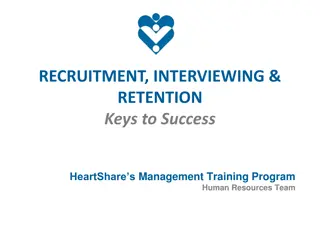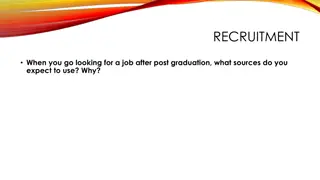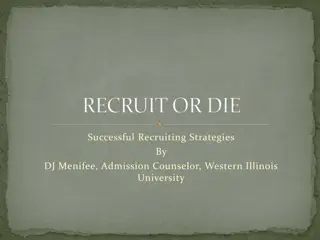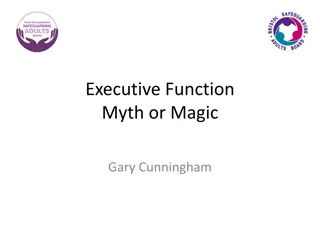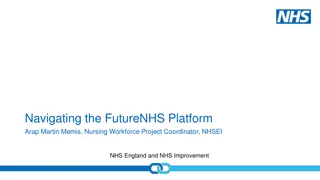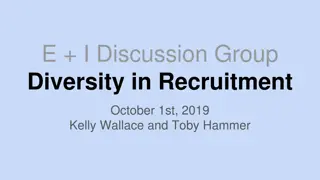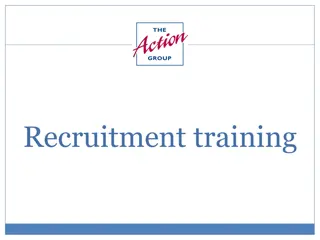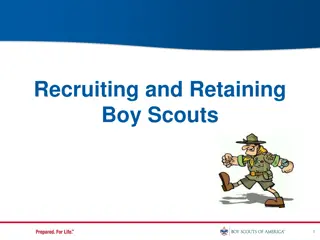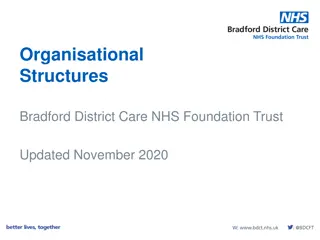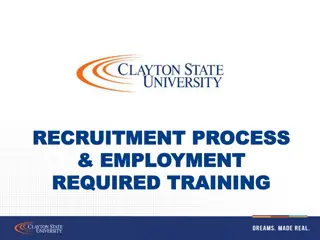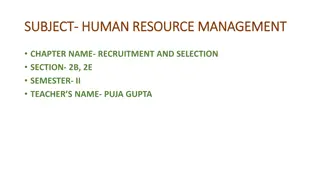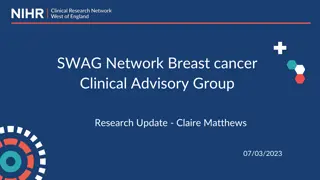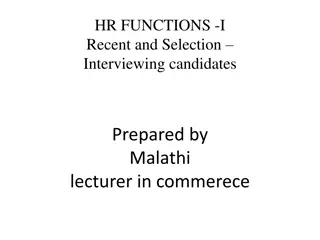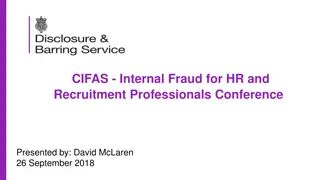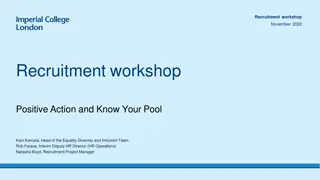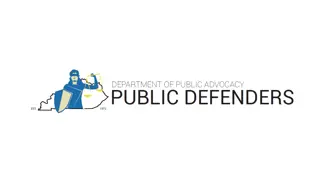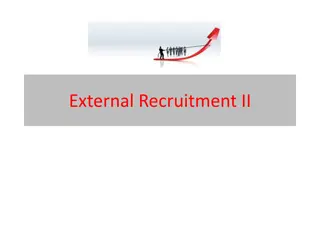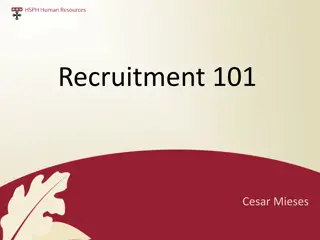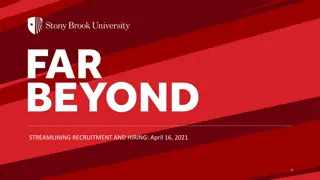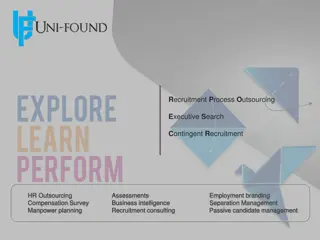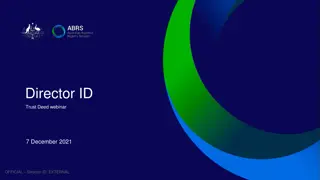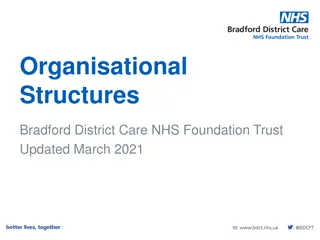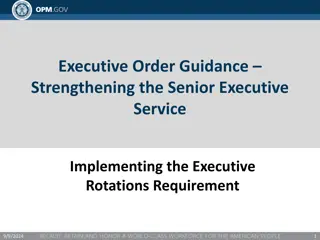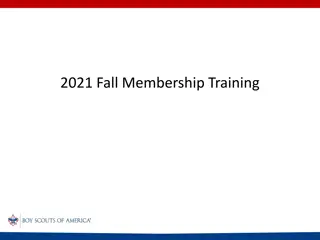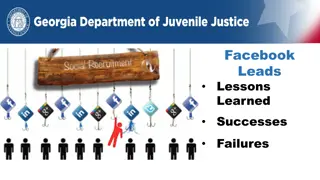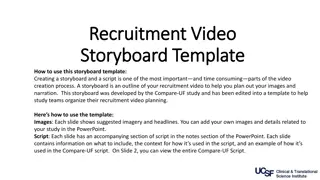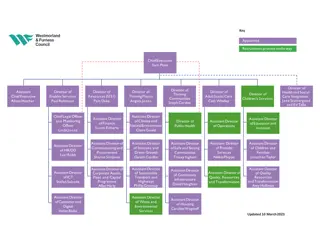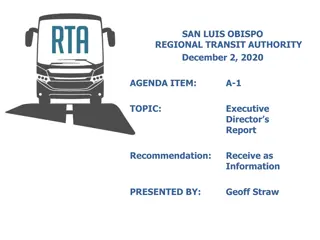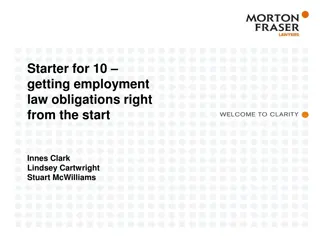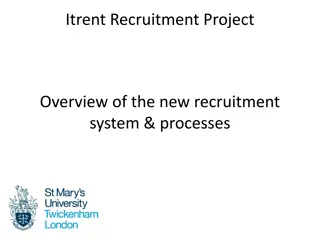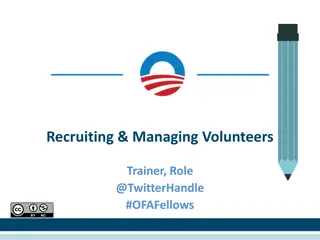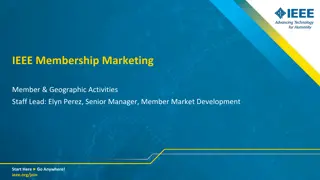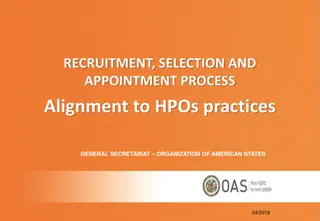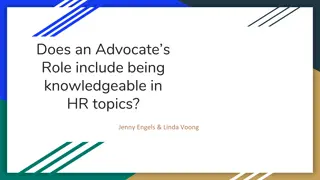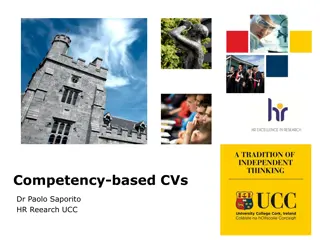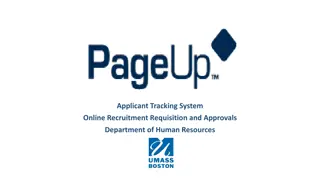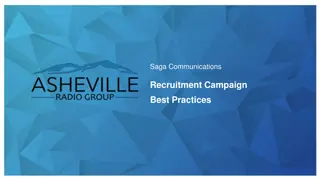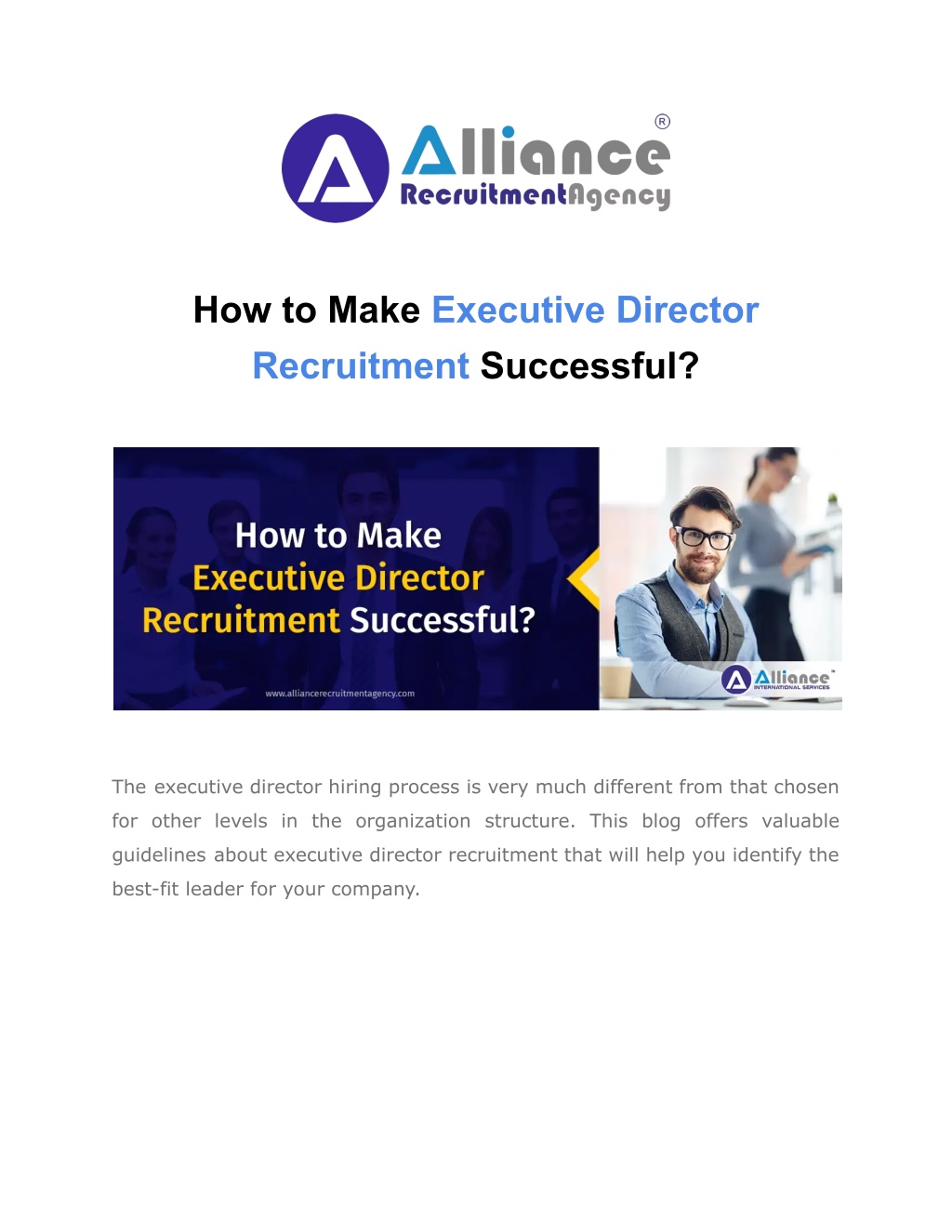
How to Make Executive Director Recruitment Successful
Optimize your executive director recruitment process with effective executive search strategies. Discover how to attract top talent and make successful hires for your organization.n
Download Presentation

Please find below an Image/Link to download the presentation.
The content on the website is provided AS IS for your information and personal use only. It may not be sold, licensed, or shared on other websites without obtaining consent from the author. Download presentation by click this link. If you encounter any issues during the download, it is possible that the publisher has removed the file from their server.
E N D
Presentation Transcript
How to Make Executive Director Recruitment Successful? The executive director hiring process is very much different from that chosen for other levels in the organization structure. This blog offers valuable guidelines about executive director recruitment that will help you identify the best-fit leader for your company.
Executive Director Recruitment Challenges With rapid digitalization and global competition, companies are now facing challenges that were previously unheard of. The company s aim to sustain and outdo the existing competition is putting it under pressure to identify and employ the best candidates at the top executive level. The recruitment process must be handled cautiously as the whole company s future and workplace culture solely depend on the decisions taken by executive heads. It is decisions made at the executive level that will either make or break the company. This very reason calls for an exceptional level of planning and strategizing when hiring an executive director recruitment initiative. According to a survey, a whopping figure of 97% of executive-level candidates in various companies are waiting to be found and approached for relevant vacancies. Traditional recruitment approaches do not work well when you need to engage in a wide-scale passive candidate approach and engagement. Instead of following the traditional recruitment process, an ideal way out is to approach a recruitment agency that offers executive recruitment support for hiring an executive director. When To Hire An Executive Director? In most cases, an executive director is hired when the top management leaders have to focus on specific goals that do not allow them enough time to oversee business and administrative management of operations.
For example, you might want directors to focus exclusively on fundraising, market entry in foreign locations, revenue generation activities, etc. Hiring an executive director will help keep the overall organizational performance on track. Understand Goals of Executive Director Recruitment A capable executive director exhibits a wide range of personalities, values, and strengths. While there are numerous duties of an executive director, here s a brief outline of the responsibilities associated with the position. An executive director provides a strategic overview, gives valuable insights while working on business plans, and helps the company evolve by achieving key objectives. Some executives are employed for particular departments like sales, marketing, finance, etc.. They focus on strategic development for those functions while participating in enterprise-level decision-making. An executive director oversees that the projects and goals of the company align with the company s culture. He or she acts as a mentor and provides feedback to operations heads and project management to enhance their quality of work. An executive director participates in decisions related to financial planning and budgeting to assess the organization s financial needs and create financial reports to be reviewed by stakeholders. He or she consults with department heads and conducts regular performance reviews. An executive director directs the HR for improving workplace policies and talent acquisition for functions associated with his or her role.
It is also part of the executive director duties to offer highly relevant and valuable counsel on overcoming business growth bottlenecks. The executive director represents the company before investors, key clients, and various other key stakeholders. Executive Director Recruitment Key Steps Since the role of an executive director comes with great responsibilities and duties, a correct process has to be followed when recruiting for such a position. Here are the key steps that should be followed while hiring an executive director for your company. Step 1: Form a Committee Include a C-Suite Leader and a Board Member Frame The Scope of Functions, Key Duties, and The Metrics To be Managed For hiring an executive director, you should always start off by forming a committee with a C-Suite Leader and a Board Member. The committee should then decide on the functions, duties and metrics that have to be managed by the new executive director. This should be done by keeping in mind the current and future needs of the organization. Determining the key roles for the position will help you with developing a profile for the ideal candidate.
Decide on the Duties of The Executive Director and The Terms of Offer Always start by analyzing the needs of your organization. As the executive director represents your company, you need to take into consideration various external factors that will impact the goals and operations of your business as it progresses into the future. Doing this will help you determine the knowledge and skills you are looking for in a candidate. Since you have to choose from a number of highly talented individuals, having this unique skill set will help you choose the candidate who comes close to it. To get the right skill set, the committee has to brainstorm the required qualities, skills, and rank them in their order of importance. Once you get the ideal skill set, you should proceed further to agree on the salary range. This will help in narrowing down your search options. Select a Team To Supervise Executive Search and Conduct Interviews The next step of the committee is to decide on a team that goes about with the executive headhunting process. It is crucial to have a strong team in the search chair to have a disciplined, professional and effective search process. It would be great if the search chair has a strong leader who is a consensus builder and an effective communicator. In addition to this, the search chair should exhibit dedication towards the job along with an ability to lead the committee into making a decision when full consensus isn t available. The whole search process for hiring an executive director should be transparent, and the committee should be informed of every progress.
Hire an External Expert in an Advisory Capacity In case the search committee is unable to devote much time to the process, hiring an external expert will come in handy. An external expert will guide the committee and the board through the interview process and ensure that the committee is engaging in an efficient search process. Additionally, the external expert provides the committee with objectivity and helps in flagging issues outside the sphere of experience of the internal interview committee. Step 2: Hire An Executive Search Agency Get An Excellent Job Profile Description Once you have finalized the duties of the position, the knowledge and skills required, and determined the salary range, it is time for you to finalize the job description. Having a good job description will save you time and narrows down your search. While it is the duty of the committee to formulate a job description, it is important to make the process consultative and take the opinion of internal staff during the process. By hearing out to the staff, you will understand the challenges existing within the organization and help you have a broader understanding of the organizational culture. This will also help you understand the undiscovered requirements of the Executive Director job role.
Coordinate to Finalize Employer Branding Techniques and Materials It is known that 95% of the candidates consider the reputation of a company as the main parameter before making the necessary jump. So you need to put a significant effort to coordinate with the search committee and other concerned departments to formulate actionable strategies and measurable objectives that align with your company s needs. This helps you create relevant employer branding material, the pitch for a passive candidate approach and an impressive well-designed profile description. Frame a Hiring Approach and Criteria Starting with planning out specific tasks on a timeline allows you to have a much clearer picture. With this, a realistic view of how the hiring process unfolds, the duration it takes, how to coordinate with the hired Executive Search Expert and what the team members role will be, an intelligent, outcome-oriented approach can be framed. This not only saves loads of time but also avoids confusion and increases the efficiency of the search team. To frame a data-driven screening and selection criteria, you could go for market mapping and competitor benchmarking for key traits, strengths, and compensation related to executive directors. Get fact-driven inputs from internal stakeholders based on key performance indicators associated with the role.
Get the Right Interview Formats For Each Round Generally, each interview session has its own unique goals and activities. An interview session based on presentations and business discussions should have its own assessment criteria, which differs from a technical interview, and personalized interviews tracking deeper questions on track records, vision, capabilities, and personality traits. Decide Voting, Scoring, and Selection Formats Once the interview process begins, you will come across many potential candidates. In order to avoid a conflict in whom to select, the search committee should establish criteria to screen and advance candidates to further processes. An effective approach to do this is to have a fact-driven, objective, and unbiased selection and voting criteria for each interview and screening activity. The voting rights could vary from one member of the interview panel to another, depending on what the interview session is about. For example, an interview round focused on technology and technical knowledge will have more voting rights in favor of the technology expert and top leadership member involved in technology and innovation.
Step 3: Search and Shortlisting For Global Operations, Find a Candidate with Global Operations Experience If your company is operating globally, then it is best to shortlist candidates with global operations experience. The executive headhunter will need detailed inputs from your side on selected geographies and the size, scope, and scale of operations in those regions. Tap Into National Talent Pools If the company is operating domestically, it would be better if you tap into national talent pools. Get 5-10 Candidates Shortlisted on Best-Match Criteria In most scenarios, the committee interviews some five to ten potential candidates in the first round and then proceeds with the top 3-4 performers to the second round. After the successful completion of the first two rounds of interviews, the search committee should further shortlist the candidates who will proceed to interview with the board members outside the committee. The search committee should refrain from ranking the candidates at this level as this
might influence the board s decision even before they interview the candidates. Execute the Best Candidate Engagement Techniques During the shortlisting process, the committee should incorporate good candidate engagement techniques. The quality of interaction should be such that the candidates take back a good view of the company and its vision and find precise details about the responsibilities associated with the position. Schedule Interviews Before scheduling the interviews with the candidates, the search committee should formulate interview questions and get them reviewed by a lawyer or HR professional to ensure that the questions might not have any hidden nuances of discrimination or other risks. The recruitment committee will decide on the number of interview rounds for the first batch of candidates. Scheduling of interview sessions needs to be done well in advance so that candidates do not get short notice. Step 4: Screen, Assess, Validate and Select Assess Attributes Not Just Experience It is great for the candidate to have a good experience, but you should assess attributes that they claim to possess. A candidate may have a good track record to boast about, but it is possible that his or her success was an outcome of the top leaders abilities as well as his or her subordinates
excellence in work management. Without the right attributes, success is often short-lived. Virtual Site Visits, Presentations and Assessments The candidates invited to the final round of interviews would need to know about your company, and virtual site visits are the best way of achieving that. Virtual site visits may involve presentations of relevant divisions by managers and a virtual tour of the workplace. There should be cleverly hidden assessment questions based on the virtual tour. The candidate could also be asked to present a presentation to solve a specific challenge and provide situational judgments through the presentation. Identify Culture-Fit Traits This is a key factor behind the internal acceptance of the chosen top leader. You might find an outstanding candidate, but if they do have the personality traits that will work well within your organization, there might be trouble later. Get Background and Documentation Checks Done Start the background and reference check process after two rounds of the interview or earlier. Starting the process before the third round of interviews clarifies any questions about the candidate that the search committee might have. If there are any problems with the background and references, it is
best to deal with them as early as possible rather than realizing them much further into the selection process. Negotiations and Discussions Compensation, Roles, Responsibilities, Etc Once all the checking is done and the finalization of the candidate is done, it is time for the selected teams to finalize the compensation package for the chosen candidates. It is important to be open and flexible in formulating the compensation package. Apart from the monetary compensation, non-monetary rewards also need to be attractive. You also need to explain the fine points related to the candidate s future responsibilities. For discussions and negotiations, it is best to choose an expert from the executive search agency you have hired. Based on inputs and reviews of the executive headhunter, the interview panel and board could finalize the terms of the offer. Consult With The Best Headhunters To Find Excellent Candidates for Executive Director Recruitment Also Read: Why Does Your Organization Need a Director? What is The Role Of A Company s Director? Alliance Recruitment Agency We at Alliance Recruitment Agency have more than 11 years of experience in corporate executive search with strong connections and contacts in various talent networks. For executive director recruitment, we consult with you, understand your business, your role-based challenges, and candidates
performance expectations. We source candidates following an exhaustive process that has a 360-degree approach. If you are looking for a global recruitment agency that specializes in executive director recruitment, connect with us! We will quickly schedule a meeting to discuss your requirements and assist you in hiring the best executive director for your company. View source : https://www.alliancerecruitmentagency.com/how-to-make-executi ve-director-recruitment-successful/ Contact Us +1 (917) 900 9072 sales@alliancerecruitmentagency.com www.allianceinternational.com



